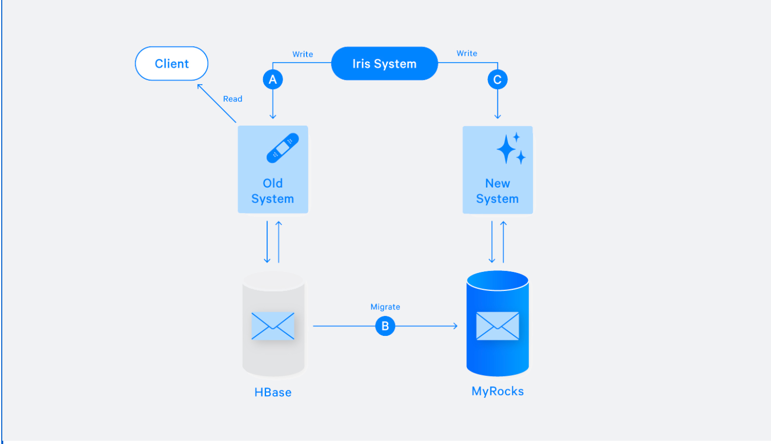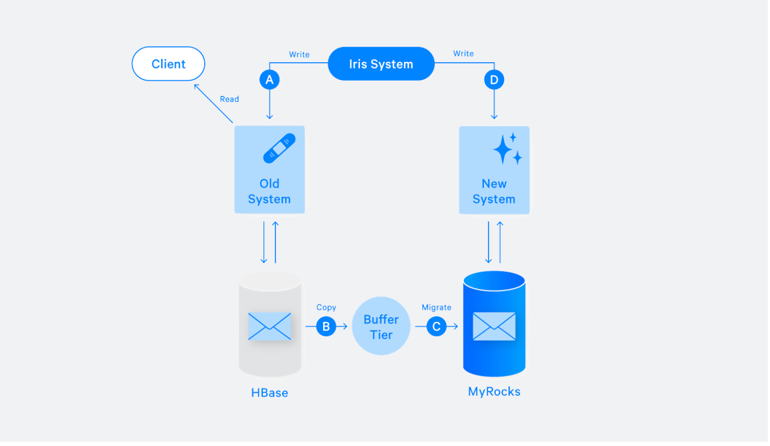Migrating Messenger storage to optimize performance

Background
In 2018, the data store backed by the Facebook messenger was HBase + HDFS. Facebook decided to migrate to their own database
project called MyRocks(underneath is RocksDB).
Challenges
- Live migration, we need to keep the messenger service up and running during the migration.
- Petabytes of data needs to be migrated.
- Some schemas have been changed, so we need to do schema conversion on the fly.
Two migration flows
The main keyword of migration is double-writing. The similar idea was used by Akkio
Normal migration
- Has an assumption: No data is written during the migration.
- Has three states:
not-migrated,double-writing,done. - Flow:
- For each account:
- Remember the data position in old system.
- Start migration.
- Once migration is done, check if data position has changed.
- If yes, migration is marked as failed, and will be retried.
- If not, proceeds to next step.
- Enter
double-writingstate. Allow writes to both old and new system.- During the
double-writing, there are two validations:- Data integrity: Check if data written into HBase is the same as the data written into MyRocks.
- API validation: Issue read requests against both old and new system check if the responses are the same.
- During the
- Post migration checks and enter
donestate.
- For each account:

Buffered migration
- The main reason we need the buffered migration is that some messenger accounts are used by enterprise with bot integrated. So the crucial assumption(No data is written during migration) can hardly guaranteed.
- Why normal migration flow does not work? The data position would always change, migration will keep retrying.
- Flow:
- Set a migration start time.
- Take a snapshot of the data.
- Copy the snapshot to a buffer tier(Could use HBase or RocksDB).
- Write traffic is sent to both old system and is queueing up by using a third party service called
Iris. - Migrate the snapshot to new system.
- Once the migration is done, drain the data from the
Irisqueue to allow new system catches up. - Post migration checks and enter
donestate.
